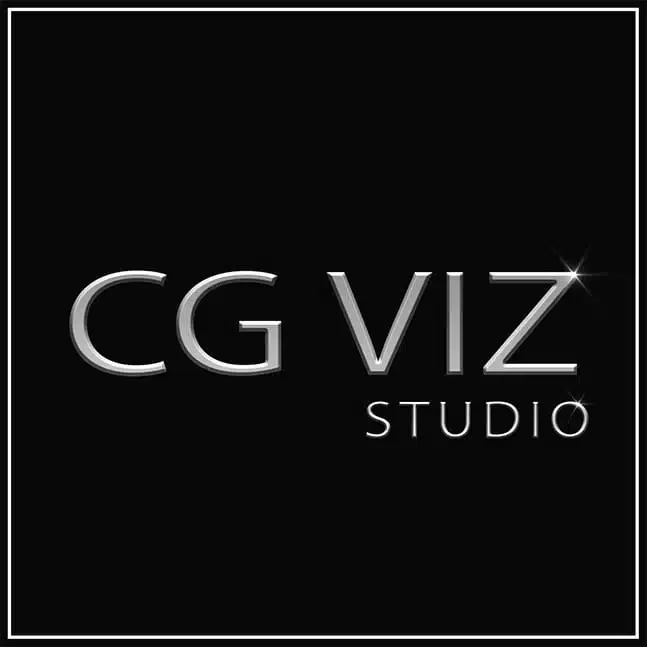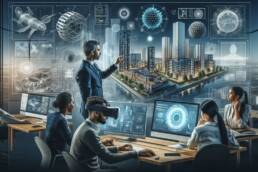3D animation is a technological marvel that has transformed our perception of storytelling and creativity. In contrast to its 2D predecessor, which depends on flat drawings, 3D animation creates a more genuine and engaging experience by immersing viewers in a world where environments and characters have dimensions. This comprehensive guide will cover the history, principles, tools, and techniques of 3D animation, providing valuable insights for beginners and enthusiasts alike.
Key Takeaways
- 3D animation revolutionized storytelling and creativity by creating immersive experiences.
- Understanding motion and timing is crucial in mastering 3D animation principles.
- Industry-standard 3D animation software plays a vital role in the animation process.
- Creating compelling storyboards is essential for effective 3D animation storytelling.
- Advanced techniques in 3D animation require precision and attention to detail.
The History of 3D Animation

1. Evolution of 3D Animation
3D animation has a long and fascinating history that has revolutionized the visual storytelling world. From its humble origins in the 1970s to today’s cutting-edge techniques, 3D animation has evolved into a powerful medium for creating immersive experiences. Its adaptability allows creators to pursue endless creative paths, and its dynamic storytelling features give characters a level of expressiveness never seen before. This adaptability has led to a wide range of applications beyond entertainment, including architecture, education, health care, and more. Businesses utilize three-dimensional (3D) animation to produce visually arresting and dynamic product representations, making it especially effective for showcasing intricate details and explaining product functionality. 3D animation improves the sensation of presence and engagement in interactive museum exhibitions, virtual training simulations, and even in modern video games. Its capacity to present complicated information in an aesthetically pleasing and understandable way continues to make it a valuable tool across various industries. The challenge of 3D animation lies in the complex interaction between technological mastery, creative imagination, and collaborative effort required to bring virtual environments to life. Across a range of media formats, 3D animation is a widely used and adaptable technique that produces aesthetically attractive and lifelike environments. With its sophisticated technology and software, artists can create settings and people with realistic motions, dynamic lighting, and detailed textures, resulting in a more engaging experience for the spectator.
2. Pioneers in 3D Animation
3D animation has revolutionized the entertainment industry, with pioneers like Jasmine Katatikarn leading the way. Their expertise has shaped the way we experience animated series and films, setting a strong foundation for the future of 3D animation. From feature animation to VFX, these pioneers have left an indelible mark on the industry, inspiring the next generation of animators and storytellers. Their contributions have paved the way for captivating narratives and lifelike character movements in modern video games. As we explore the world of 3D animation, we honor the visionaries who have elevated the art form to new heights.
Principles of 3D Animation

1. Key Concepts in 3D Animation
In the realm of 3D animation, grasping the key concepts is akin to learning the alphabet before forming words. It’s the foundation upon which all else is built. At the core, we find modeling, the process of creating the 3D shapes and characters that inhabit our digital worlds. Rigging follows, giving our models the skeletons they need to move.
Texturing breathes life into our creations, wrapping surfaces with colors and patterns to mimic real-world materials. Lighting sets the stage, casting shadows and highlights to convey mood and depth. Finally, rendering transforms our meticulous work into the final image or animation, ready for audiences to enjoy.
- Modeling: Crafting the 3D forms
- Rigging: Implementing a framework for movement
- Texturing: Applying surface details
- Lighting: Setting the ambiance
- Rendering: Producing the final visual output
Remember, each of these elements interacts with the others, creating a delicate balance. A change in lighting can alter the perception of texture, and the way a model is rigged can drastically affect its animation. Mastery of these concepts is not just about understanding each in isolation, but also about appreciating how they interconnect to bring a static model to life in a dynamic and convincing manner.
2. Understanding Motion and Timing
Animation timing techniques play a crucial role in bringing 3D characters and scenes to life. By controlling the speed and impact of motion, animators can create compelling and realistic animations. This involves defining keyframes to capture the essence of movement and allowing the animation software to fill in the gaps, resulting in smooth and lifelike motion. Additionally, understanding the concepts of animation fundamentals such as timing and spacing is essential for achieving fluid and organic motions. To further enhance the viewing experience, adding sound effects and music can elevate the emotional impact of the animation. By modifying and incorporating audio elements, animators can create a more immersive and engaging experience for the audience. Finally, paying attention to last-minute details and the exporting process ensures that the final animation is polished and ready to captivate viewers. It’s important to consider these aspects to deliver high-quality 3D animations that leave a lasting impression.
Tools and Software for 3D Animation
1. Industry-standard 3D Animation Software
To create 3D animation, a variety of software alternatives are available, ranging from professional-grade tools to more approachable and beginner-friendly programs. Here are a few well-liked options:
- Autodesk Maya: Industry-standard software for creating video games, films, and television shows. Includes sophisticated modeling, rigging, animation, and rendering capabilities. Provides a large selection of scripting options and plugins.
- Blender: Open-source and free software that is appropriate for both novices and experts.
One of our favorites is Maya, one of the most popular 3D animation and modeling programs. Blender is a free 3D animation software that big studios like Disney use for their films. On the other hand, RenderMan is used by Pixar. This software application is free for non-commercial projects. Other applications that big studios use to animate are Zbrush, Keyshot, and Adobe Character Animator.
While most 3D animation software applications come with complex toolsets to bring ideas to life, some are very beginner-friendly. That’s what this guide is all about. Let’s get to know more about these applications and how each one could help you succeed in the animation and VFX industries:
- Maya: Industry-standard 3D animation software
- Blender: Open-source and free software for 3D animation
- RenderMan: Used by Pixar, free for non-commercial projects
- Zbrush: Popular software for 3D sculpting and painting
- Keyshot: Rendering and animation software
- Adobe Character Animator: Animation software for 2D characters
Want to learn more? Let’s dive right in.
2. Essential Hardware for 3D Animation
In the world of 3D animation, the tools and software we use are essential to our craft. We rely on a combination of computer hardware and specialized applications to bring our creative visions to life. The key piece of hardware required is a computer or laptop, which serves as the foundation for our digital artistry. As for 3D software, we have a range of specialized applications at our disposal, including Maya, 3D Studio Max, After Effects, MotionBuilder, Mudbox, Premier, and Cinema 4D. These applications provide us with the necessary tools for modeling, rigging, animation, and rendering, allowing us to unleash our creativity and expertise in the world of 3D animation. When it comes to software alternatives, we have the flexibility to choose from professional-grade tools to more approachable and beginner-friendly programs. Some well-liked options include Autodesk Maya, an industry-standard software with sophisticated capabilities, and Blender, an open-source and free software suitable for both novice
Storyboarding and Character Design
1. Creating Compelling Storyboards
The significance of storyboarding in the animation process cannot be overstated. A well-crafted storyboard serves as the blueprint for the entire animation project, guiding the visual narrative and ensuring a cohesive and engaging story. To illustrate, here’s a brief overview of the key elements of a compelling storyboard:
- Clear depiction of key scenes and transitions
- Emphasis on character expressions and movements
- Integration of visual and textual storytelling elements
In addition, it’s essential to consider the pacing, composition, and visual style to effectively convey the intended narrative. A meticulously designed storyboard sets the stage for seamless animation production, allowing for efficient collaboration and clear communication among the creative team.
Tip: A well-structured storyboard not only enhances the creative process but also streamlines the production workflow, resulting in a more polished and impactful final animation.
2. Character Development in 3D Animation
In the realm of 3D animation, character development is a pivotal element that breathes life into the narratives we craft. It’s a meticulous process that begins with a deep understanding of the character’s backstory, personality, and role within the story. We prioritize creating characters that resonate with audiences, ensuring they are not just visually appealing but also emotionally compelling.
To achieve this, we follow a structured approach:
- Conceptualization: This is where we define the character’s physical features, personality traits, and backstory. It’s a phase of exploration and creativity.
- Rigging: After the model is built, we add a skeleton that allows for movement. This rig is the foundation for realistically animating the character.
- Animation: We then pose the characters at keyframes to outline their movements and actions. The software interpolates these keyframes to create fluid motion.
- Lighting and Rendering: Finally, we use lighting to set the mood and render the scene to produce polished visuals that captivate our viewers.
Tip: Always consider the emotional arc of your character. Their development should be coherent with the narrative and evolve throughout the story to create a lasting impact.
Our goal is to transform static models into dynamic entities that can carry a story on their own. By meticulously crafting each aspect of the character, from the initial sketches to the final render, we ensure that our animated beings are not just moving images but entities with souls. The right blend of technical skill and creative vision can lead to characters that are remembered long after the screen fades to black.
Animating in 3D

1. Animating Characters and Objects
3D animation is the process of creating moving images in a three-dimensional (3D) environment, giving the illusion that these digital objects are moving. This process involves 3D modeling and rigging to bring static models to life dynamically and expressively. The central component of 3D animation is the animation process, where characters and objects are posed at keyframes and filled in with smooth motion using animation software. Additionally, lighting and rendering play a crucial role in setting the ambiance, adding highlights, shadows, and depth to enhance realism. The final stage of rendering produces finished graphics that captivate viewers with their lifelike appearance. Here are some key aspects of 3D animation:
- 3D Modeling: Building intricate 3D models of people, objects, and settings using specialized software.
- Rigging: Giving a character a digital skeleton to control and articulate movements.
- Animation: Defining character movements and actions, and filling them in with smooth motion using animation software.
- Lighting and Rendering: Setting the ambiance, adding highlights, shadows, and depth to improve realism. The rendering stage produces finished graphics ready to enthrall viewers.
Tip: Rigging is a crucial phase that turns static models into expressive, dynamic characters.
2. Advanced Techniques in 3D Animation
As we delve deeper into the realm of 3D animation, we encounter advanced techniques that transform the way we create and perceive animated content. These methods are not just about adding complexity; they are about enhancing the narrative impact and emotional resonance of our animations. One such technique involves the optimization of the deformation field to achieve temporal smoothness constraints, which leads to more lifelike animations.
In the pursuit of realism, we also focus on the creation of lifelike surfaces and textures. This is where the subtleties of light play and shadow casting come into play, adding depth and believability to our scenes. To aid in this intricate process, we’ve compiled a list of essential steps:
- Understanding the principles of material properties and their interaction with light
- Mastering the use of subsurface scattering for skin and organic materials
- Implementing reflection and refraction techniques for producing realistic surfaces
Tip: Always remember that the devil is in the details. Paying close attention to the nuances of lighting and texturing can elevate your animation from good to exceptional.
Finally, we must not overlook the importance of audio in enhancing the viewing experience. The right sound effects and music can significantly amplify the impact of your animation, making it a more immersive experience for the audience. As we conclude, let’s recall that the journey to mastering advanced 3D animation techniques is one of continuous learning and exploration. Embrace the process, and let your creativity soar.
Are you ready to bring your visions to life in stunning 3D animation? Look no further than CG Viz Studio, the premier 3D rendering company. Our team is dedicated to turning your ideas into breathtaking visual experiences. Whether you have questions, ideas, or projects in mind, we’re here to listen and create. Reach out to us today and let’s make your dreams a reality!
Get your project estimated within 60 minutes - simply send us your project brief!
Conclusion
In conclusion, 3D animation has revolutionized the art of storytelling and creativity, offering a more genuine and engaging experience for viewers. The applications of 3D animation are vast, ranging from film and gaming to architecture and interior design. As technology continues to advance, the potential for 3D animation is limitless, shaping the future of visual media and entertainment. With the right tools and knowledge, anyone can embark on the exciting journey of 3D animation creation, contributing to the ever-evolving landscape of digital art and innovation.
Frequently Asked Questions
3D animation involves creating three-dimensional moving images, while 2D animation relies on flat drawings. 3D animation provides a more immersive and engaging experience by bringing environments and characters to life with depth and dimension.
Key concepts in 3D animation include modeling, rigging, texturing, lighting, rendering, and motion. These concepts are essential for creating realistic and visually appealing 3D animations.
Industry-standard 3D animation software includes Maya, 3ds Max, Blender, Cinema 4D, and Houdini. These software packages offer a wide range of tools and features for professional 3D animation production.
Essential hardware for 3D animation includes a powerful computer with a dedicated graphics card, sufficient RAM, and a high-resolution display. Additionally, a graphics tablet and stylus can enhance the precision of digital artwork and character design.
Creating compelling storyboards involves visualizing key scenes, establishing shot compositions, and conveying the narrative flow. Storyboarding software such as Storyboard Pro and Adobe Animate can streamline the process of planning and organizing visual sequences.
Advanced techniques in 3D animation include character rigging for complex movements, advanced texturing and shading for realistic surfaces, and advanced lighting and rendering for cinematic quality. Additionally, motion capture and fluid simulations are advanced techniques used to enhance character animation and environmental effects.



